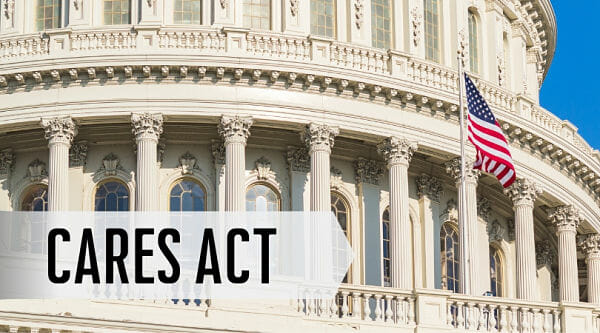The coronavirus has been devastating in more than one way. After many states implemented shelter in place orders, many Americans were left in a very vulnerable financial situation. Without the ability to go to work and earn an income, many people have struggled to make ends meet. The CARES act, also known as the Coronavirus Aid, Relief, and Economic Security Act, was designed to lessen the financial blow many Americans faced with the last several months. The new law included special provisions for Coronavirus IRA withdrawals. The new guidelines give investors a free pass to tap their retirement accounts without penalties, but there are some stipulations. Here’s is what you need to know about COVID-19 IRA withdrawals.
CARES Act Coronavirus Relief for IRAs
Individual retirement accounts help savers grow their retirement savings with additional tax benefits. An IRA allows individuals to save for retirement with tax-free growth or on a tax-deferred basis. As a result, there is a minimum age requirement to withdraw without a tax penalty. However, in an effort to combat the economic stress many of American’s are facing, the CARES Act allows IRA account holders several options for accessing funds from the IRA accounts.
Under the CARES Act, individuals can withdraw up to $100,000 in coronavirus- related distributions from eligible retirement plans without facing the usual tax penalties for early withdrawal. In addition, it also increases the amount an individual can borrow from their retirement account from $50,000 to $100,000 and also enables individuals to defer payments on IRA loans for up to one year.
What is a Coronavirus-Related Distribution?
Any IRA withdrawal made between January 1 and December 30, 2020, qualifies as a coronavirus distribution. Only certain retirement accounts qualify, and there is a $100,000 limit on total disbursement from all accounts.
What About 401(k) Coronavirus Withdrawals?
Employer-sponsored retirement accounts are also eligible for emergency withdrawals. If you have a 401(k) and 403(b) plan, you can borrow up to $100,000 or 100% of your investment. Typically, these transactions can’t exceed $50,000. Borrowers can also defer their loan payments for up to 1 year. This rule also extends to existing loans. Contact your company’s retirement plan administrator for more information.
How to Qualify for Expanded IRA Distributions
You have to meet certain criteria to qualify for coronavirus IRA withdrawals:
- Either yourself, your spouse, or your dependents must test positive for SARS-CoV-2 or COVID-19 using a CDC-approved method.
- You must suffer adverse economic hardship as a result of the pandemic. Examples of hardship include quarantines preventing you from working. You can also qualify if you’re furloughed, laid-off, or had hours cut because of COVID-19.
- Lack of childcare due to COVID-19 forced you to stay home from work.
- If you’re a business owner, you had to close your business or reduce operating hours because of COVID-19.
Taxes on Coronavirus IRA Distributions
The IRS gives you the option to disburse the withdrawal over three years or take it as a lump sum. This added flexibility can help you better manage the tax impact of your emergency disbursements.
For example, if you withdraw $30,000 from your IRA, you can claim $10,000 in 2020, then claim another $10,000 in 2021, and so on, Alternatively, you can claim the entire $30,000 in 2020.
The government also waived the 10% tax on early disbursements, so you don’t have to worry about it during the grace period.
How to Avoid Taxes on Qualified Distributions
If you want to avoid paying taxes on qualified distributions, pay back the money quickly. If your plan allows rollover contributions, you can pay back the amount of the distribution over three years.
For example, you can take out $30,000, and spread it over three years. If you claimed $10,000 in 2020, you can avoid paying taxes if you pay back the remaining $20,000 in 2021. Later, you can file an amended return to request a refund for the taxes you paid on the $10,000 you claimed in 2020.
Make sure you check with your plan’s administrator before you go this route. Some plans don’t allow rollover contributions.
Should I Take Advantage of the Expanded Distributions?
Taking advantage of COVID-19 IRA withdrawals could make your life a lot easier. However, you will miss out on some compound interest in the long-run. COVID-19 retirement disbursements also add to your taxable income, so they could affect your tax bill. You should carefully consider your short-term needs and long-term goals before you make a decision.
Answers to Your IRA Tax Questions
Shared Economy Tax’s team of veteran accountants is here to answer all of your tax questions. Get started today with a one-on-one strategy session with one of our tax pros. We can tell you exactly how a coronavirus IRA withdrawal will impact your tax planning picture. Then, we’ll show you how to minimize the tax impact. For more coronavirus tax news, sign up for our complimentary newsletter using the form below.
